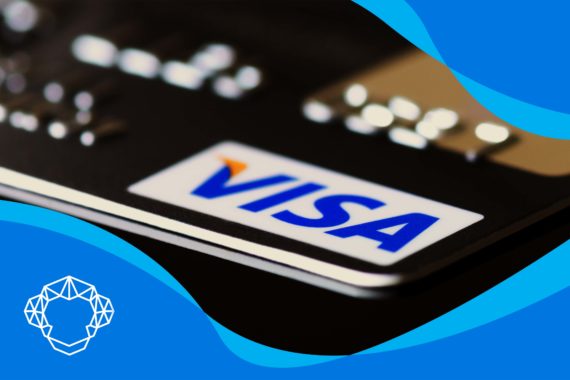Almost 60% of Americans believe that the US will soon become a cashless nation, while 40% already use plastic to purchase goods and services. In other words, if you want to grow your enterprise, you will have to accept card payments, which means you will have to pay interchange fees to your bank. But you may ask now, what are those fees in the first place?
Also known as “interchange reimbursement fees,” they are the largest component of credit card processing costs, and they are paid to the banks that issue customers’ cards. They can’t be negotiated with your processor since they are determined by companies with the likes of Visa and Mastercard.
To avoid losing money and slowing down the development of your business, you should be aware of the costs you have to pay to be able to process card-based transactions. Research, pick the best processing plan and learn how such fees affect small businesses and their bottom line. When you know what to expect, it will be easier to find a merchant service provider and a pricing model that will help you save some money.
What Is an Interchange Fee?
When merchants accept a credit or debit card payment, funds are transferred from the issuing to the acquiring bank, in a process that seems to last no longer than a few eyeblinks. This is not a simple two-second process, however. It involves several entities working “behind the scene,” including cardholders’ and merchant’s banks, payment processors, payment getaways, and multinational networks such as Visa or MasterCard . All of them charge a percentage-based fee for their role in the process every time somebody pays with plastic. These charges usually appear as a single amount on your monthly statement. This is an extremely oversimplified picture because there are actually around 300 individual interchange fees as part of the single one you pay.
What Is the Role of the Acquiring Bank in Credit Card Processing?
An acquiring bank or acquirer is an institution that enables businesses and individuals to accept cards as a method of payment for goods and services. They will allow you to set up a merchant account and actually take the risk associated with cashless transactions, for which they take their cut.
In this instance, it is the acquiring bank that pays the cost of interchange to the issuing bank . The merchant then repays the acquirer through its regular processing rates.
Who Pays the Fee?
Simply put, you, as a business owner, pay the fee, but indirectly. This means you will pay your processor, and they will include the price of interchange in your credit card processing costs. They will later pay the bank for its service.
Are Interchange Fees Negotiable?
These costs are not negotiable in any case, because your processor does not determine them. What you have to keep an eye on, though, is the so-called “padded interchange,” a practice in which dishonest processors inflate the cost of interchange and try to profit from it on your expense.

How Much Are the Interchange Rates for Debit and Credit Cards?
The pricing structure of these fees is complex and is based on card brand, the type of credit or debit card, type of transaction, and the size of the merchant. In the US, the average rate for credit card payment is around 1.80%, while the debit card payment is 0.3% of the transaction value.

How Much Are MasterCard and Visa Interchange Fees?
Did you know that Visa has the highest number of cards in circulation in the US, with 52.8% of the market share and that MasterCard comes in second with 31.6%? They are the biggest companies of their kind in the world, and merchants will most certainly encounter their fees at some point. Both Visa and MasterCard have charges that depend on cards and transaction types. For more information, make sure to check out their official sites.

How Much Are American Express Discount Rates?
American Express doesn’t charge interchange expenses but imposes a discount rate, which has almost the same purpose. Their charges are reliant on the type of trade being serviced. Almost 7.5% of all plastic in circulation is American Express, and merchants opt to accept them because of high-spending cardholders.

How to Pick the Right Processing Rates Plan
When a business starts accepting card payments, owners need to fully understand rate plans, so that they can pick the one that best suits their enterprise. Choosing the right plan will depend on many factors, such as processing volume, average sales ticket, and how established the business is.
Is Flat Rate Pricing the Best?
With a flat-rate credit card processing plan, your overall cost will be predictable and easy to comprehend. However, the interchange fee and the processor’s markup are blended into a single percentage rate, sometimes with an added fixed amount. It is a good option for businesses with a low monthly volume.
Should You Choose Tiered Pricing?
With tiered pricing, you will get predictable rates, but your transactions will be rated as qualified, mid-qualified, and nonqualified. The markup is paid based on the transaction type. This plan is easy to understand, but it lacks transparency. That’s why many financial experts recommend avoiding it if you don’t want to lose money.
Is Interchange-Plus Pricing Transparent?
This is the most transparent and affordable plan you can get because your markup is fully visible in statements, and you’ll know just how much money is going to the processing firm. Even though you are paying monthly and yearly payments, you will save money on processing costs as long as your volume is high enough.
Subscription Pricing Is Good for Who?
Subscription pricing separates the processor’s markup from the interchange, and your processor will charge you for a single monthly subscription instead of many separate account fees. This type of plan might not be good for new enterprises because of high monthly subscription prices. However, if you have an established firm with a notable volume, you can give this plan a chance.

What Are the Impacts of Fees on Small Businesses?
Did you know that there are 30.7 million small businesses in the US, which accounts for 99.9% of all businesses? This means small companies are the backbone of the US economy and accepting credit or debit cards is highly beneficial for their bottom line. If you want to expand your business, there are additional things to consider before you start accepting plastic.
Even though you have found a merchant service provider that will help you grow your brand, you still have to understand the process of accepting credit card payments, and how and why they are subjected to more than a few fees. Smaller merchants pay disproportionate amounts since they don’t have the volume to negotiate lower rates. Nevertheless, interchange fees are here to stay, so it would be smart to get acquainted with them as soon as possible.







